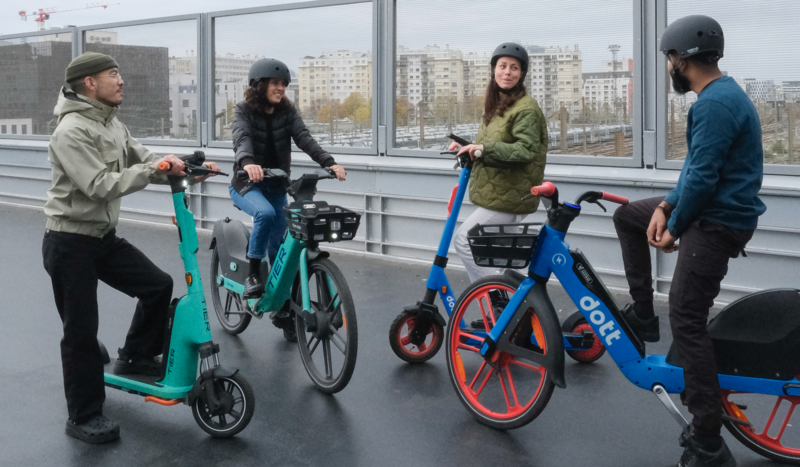In recent years, shared micromobility startups have gained significant popularity and acceptance as a more sustainable and cost-effective mode of transportation. As the industry grows and competition intensifies, it becomes essential for these companies to innovate and differentiate themselves from their competitors. One way to achieve this is by leveraging data, and there is no better source of data for the micromobility industry than Strava.
Strava is a social fitness app that tracks athletic activity and connects athletes with each other. The app has amassed an immense amount of data on cycling and running routes, including popular routes, peak usage times, and average speeds. With over 70 million registered users and over 5 billion activities logged, Strava has an unparalleled database of cycling and running data.
A shared micromobility startup that acquires Strava can leverage this data in a multitude of ways to improve its service and offer a more personalized experience for its users. Here are some of the possibilities:
- Optimize route planning: Strava’s data can help micromobility startups identify the most popular routes and the times at which they are busiest. This information can help companies optimize their fleet distribution and route planning, ensuring that they have enough bikes/scooters available at peak times and locations.
- Offer personalized recommendations: By analyzing user data, micromobility startups can offer personalized recommendations for routes based on user preferences and past activity. For example, if a user frequently cycles on a particular route, the startup could recommend alternative routes with similar characteristics.
- Enhance safety: Strava’s data can help micromobility startups identify high-risk areas for accidents or near-misses, enabling them to take preventative measures to enhance safety. For example, the startup could adjust the speed limit or provide safety reminders in high-risk areas.
- Provide insights to city planners: Strava’s data can provide valuable insights to city planners and policymakers to help them make informed decisions on infrastructure development and investment. By analyzing Strava’s data, policymakers can identify popular routes and usage patterns, helping them prioritize investments in bike lanes, for example.
- Improve user engagement: By integrating Strava’s social features into their apps, micromobility startups can improve user engagement and loyalty. For example, users could connect with other cyclists in their area, join cycling clubs, or participate in challenges.
As a shared micromobility startup, SMOVECITY could benefit greatly from Strava’s database of cycling and running data. Strava’s data can help SMOVECITY to optimize its fleet distribution and route planning by identifying the most popular routes and peak usage times. With access to Strava’s data, SMOVECITY can offer personalized recommendations to users based on their past activity and preferences, enhance safety by identifying high-risk areas for accidents, and provide valuable insights to city planners to help them make informed decisions on infrastructure development and investment. By integrating Strava’s social features into their app, SMOVECITY can improve user engagement and loyalty.
The acquisition of Strava would be a smart move for any shared micromobility startup looking to gain a competitive advantage in the market. With its unparalleled database of cycling and running data, Strava’s data can provide valuable insights into user behavior, enabling startups like SMOVECITY to improve their service, enhance safety, and offer a more personalized experience for their users.




